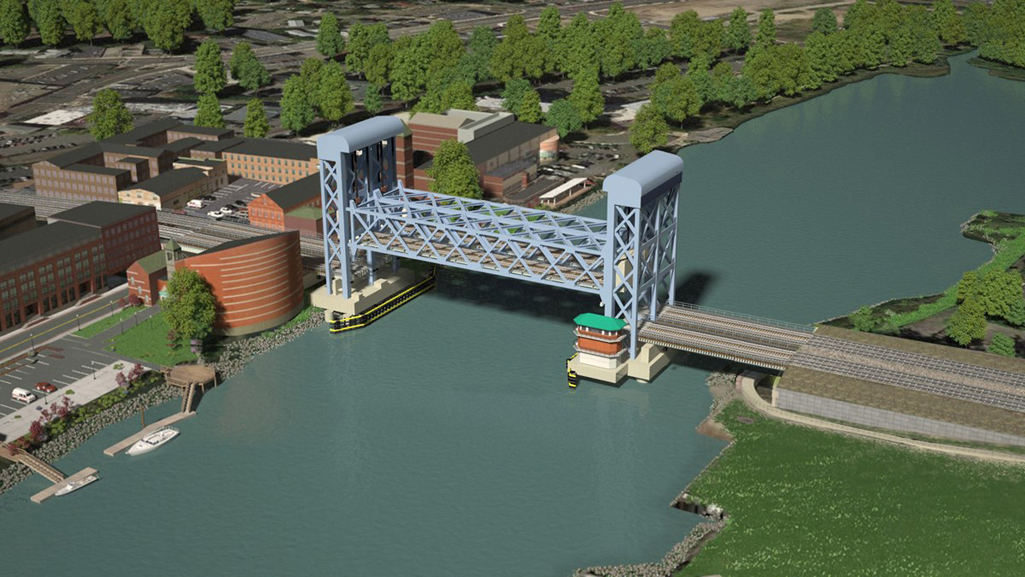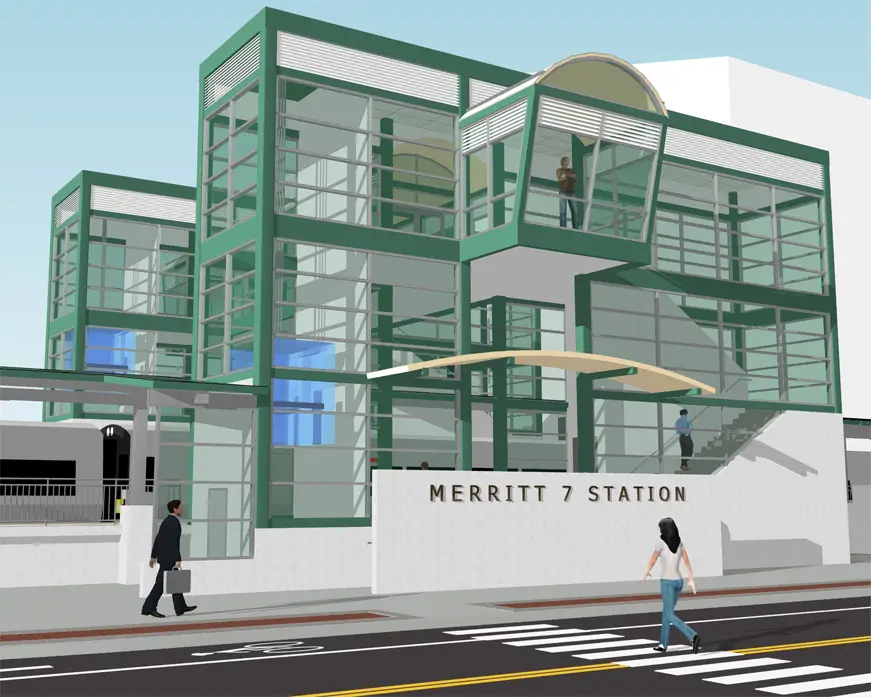Building a better transportation system in Norwalk
Norwalk Mayor Harry Rilling is feeling pretty good about his city right now.
Of course, part of a city leader”™s job is to exude optimism, but Rilling believes that Norwalk is well on its way to becoming more attractive to prospective businesses and
residents alike.

That’s due in part to plans for upgrading its Merritt 7 train station, replacing the 120-year-old Walk Bridge that carries Amtrak and Metro-North Railroad New Haven Line trains over the Norwalk Harbor, and ”” possibly ”” building a train station in its burgeoning Wall Street district.
“More and more people are looking to rely on public transportation,” the mayor said at his office. “At the same time, we”™re looking to reduce the number of cars on our streets and highways to the greatest degree we can. Whether that”™s by more people using the train, shuttles (property managers Clarion Partners and Marcus Partners run such a service) or bikes, we want to make getting around more safe and efficient.”
Located near the Merritt Parkway and close to a number of residential developments as well as The Towers and Merritt 7 Corporate Park, the revamped station is expected to include a raised platform, an elevator to better accommodate handicapped passengers and ”” most crucially, Rilling said ”” a footbridge allowing commuters to cross over from its west to east side.
Also under consideration is expanded parking. Currently there are just 88 spaces ”” sorely deficient when it comes to demand, regardless of plans to reduce automobile traffic.
“Whenever I go by there, every parking space is taken,” Rilling said.
Although the renovated station is expected to add just 16 more parking spaces, Rilling noted that there has been some talk about constructing a parking garage across the street, which would also include retail and residential space.
Timothy Sheehan, executive director of the Norwalk Redevelopment Agency, said that renovations are still in the design stage, which he described as “well along.”
He added that the number of trains going through Merritt 7 would not increase: “This is about increasing the efficiency of the stop itself and the connections to the offices and other buildings in the area.”
Easy access to The Towers and the like from the station now “is almost nonexistent,” Sheehan said.
Both he and Rilling declined to provide a price tag for the renovations; the state Department of Transportation authorized $21 million in borrowing earlier this year.

Bidding on the Merritt 7 station project is set for the early spring with a mid-summer 2018 start of construction. It is anticipated that it will take two construction seasons to complete; the existing station will remain in operation during construction.
Rilling said the new train station will also benefit developments along Glover Avenue. “There”™s a lot of interest in that area,” he said. “What we see is almost a ”˜village district”™ there, with so many jobs along with residential development, which would of course benefit from the new station as well.”
As for the Wall Street district ”” which has seen a significant increase in new businesses, especially restaurants, over the past couple of years ”” Sheehan said “there”™s been a high degree of interest” expressed in returning a train station there.
Rilling, who”™s brought the subject up during recent mayoral debates leading up to the November election, said the area has been without a train station “since the 1930s.” Originally located at 47 Wall St., a new station would most likely be built across the street at the city-owned Mechanic Street Parking Lot.
“The first step would be a feasibility study to verify our belief that there”™s a real need there,” the mayor said.
All of this work, Rilling added, is being done as part of an effort to tie Norwalk and South Norwalk more closely together, instead of continuing to exist “as two separate downtown areas.”
No doubts exist about replacing the Walk Bridge. The existing structure, built in 1896, carries four railroad tracks of the Northeast Corridor and Metro-North Railroad’s New Haven Line and is critical to intercity and high-speed passenger rail service by Metro-North and Amtrak, as well as freight rail service by CSX and the Providence &
Worcester Railroad.
The Walk Bridge currently carries approximately 200 trains and 125,000 passengers daily, with DOT estimating that ridership will double by 2065. Part of the Northeast Corridor ”” the busiest rail corridor in the nation ”” the 564-foot-long, four-span swing bridge is understandably deteriorated.
Replacing it will involve construction in highly developed South Norwalk while simultaneously maintaining rail service and navigation on the Norwalk River.
In addition to replacing the existing bridge, elements of the bridge replacement project include east and west approach embankment work and retaining walls, track work, catenary and signal work, removal of existing high towers, relocation of high-voltage transmission lines and a new fender system in the waterway.
The project also includes the rehabilitation of the Metro-North Bridge over Fort Point Street, a single-span structure that is also in deteriorated condition, which carries four Metro-North tracks. The goal is “to provide a safe and reliable structure with structural capacities to accommodate the demand from passenger and freight equipment and meet today’s industry standards,” according to the DOT website.
The department anticipates that construction on the four-to-five-year project will begin in mid-2019, according to DOT spokesman Jim Watson. “It is currently at 30 percent design,” he said. “We anticipate being at 60 percent design in January 2018, and to have the design completed by the end of 2018.”
“We”™re working very closely with the DOT, including the design of the replacement bridge,” Sheehan said. “What we have is pretty iconic, so what we”™re ultimately after is something that”™s aesthetically pleasing as well as efficient.”
That the Walk Bridge is critical not just to Norwalk ”” Stamford Mayor David Martin has repeatedly bemoaned its frequent breakdowns ”” underscores a theme that Rilling, Martin and others have been developing: That it”™s in lower Fairfield County”™s best interests to act as a unit, rather than individual communities, to attract newcomers and retain those already here.
Echoing remarks made at the recent Mayors”™ Forum at UConn”™s Stamford campus, Rilling said that Norwalk, Stamford, Greenwich, Westport and Fairfield are increasingly working “on joint pitches to companies interested in coming to our area.”
Noting the state Department of Economic Development”™s announcement last week that the Stamford metro area is one of two it is officially presenting to Amazon for consideration to be home to that firm”™s second headquarters, Rilling said: “We never thought that Norwalk itself was appropriate for something of that size” — a $5 billion facility that will eventually be staffed by 50,000 employees ”“ “but we do think that we are an exciting place for the folks who work there to live.”
“We need to look beyond our borders, while retaining each of our unique cultures and identities,” Rilling said. With the proximity of Boston, New York City and even Washington, D.C., “We have everything that business owners would want.”
While those proximities are nothing new, the mayor said, “We”™ve just never done it this way before. We”™ve been operating in silos and just marketing our own communities. But now we”™re recognizing ”” and working to help others recognize ”” that lower Fairfield County has something unique to offer.”
Rilling said that “a couple” of other major corporations have been attracted by the joint marketing push, but declined to identify which ones.